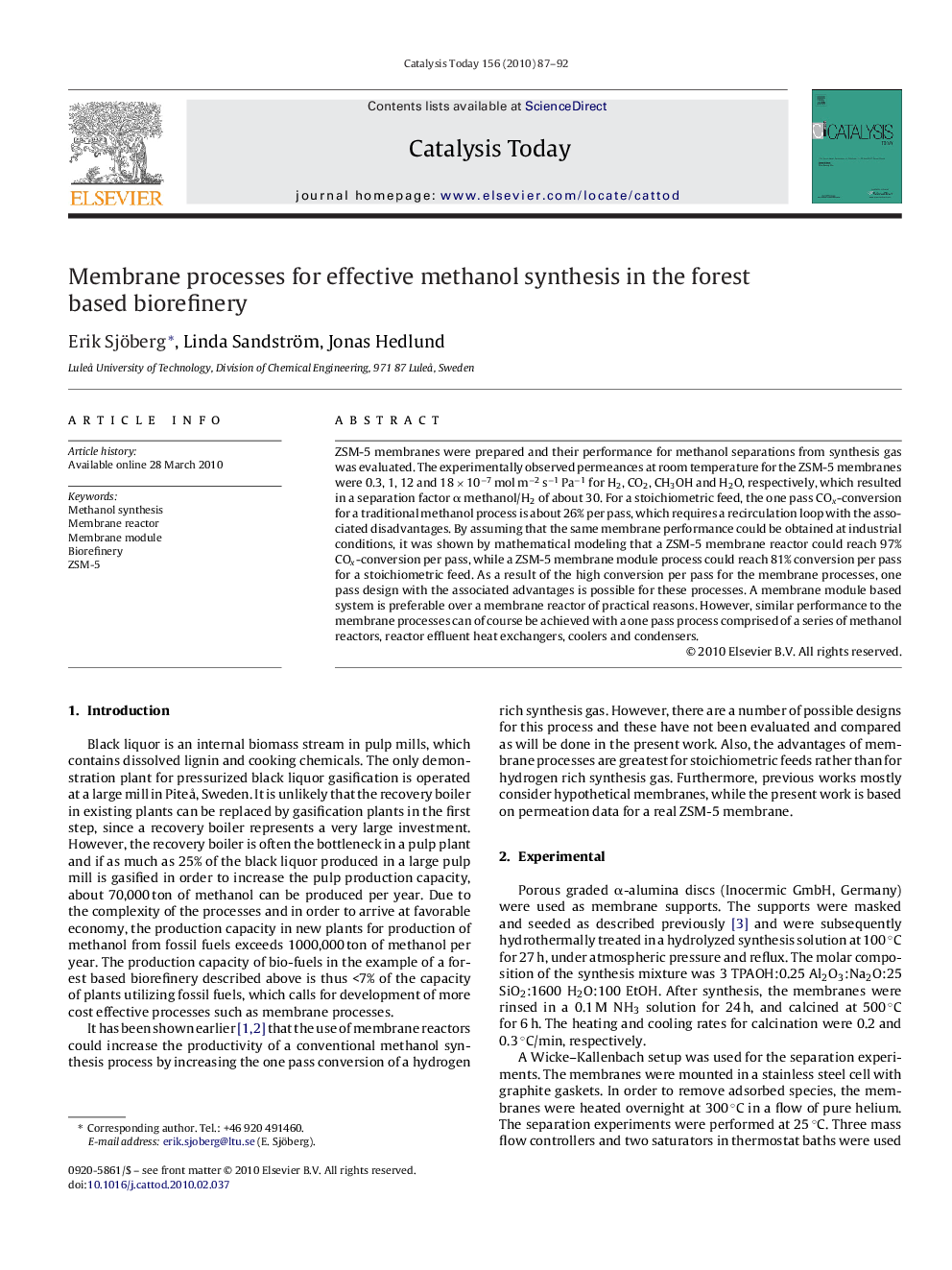| Article ID | Journal | Published Year | Pages | File Type |
|---|---|---|---|---|
| 56798 | Catalysis Today | 2010 | 6 Pages |
ZSM-5 membranes were prepared and their performance for methanol separations from synthesis gas was evaluated. The experimentally observed permeances at room temperature for the ZSM-5 membranes were 0.3, 1, 12 and 18 × 10−7 mol m−2 s−1 Pa−1 for H2, CO2, CH3OH and H2O, respectively, which resulted in a separation factor α methanol/H2 of about 30. For a stoichiometric feed, the one pass COx-conversion for a traditional methanol process is about 26% per pass, which requires a recirculation loop with the associated disadvantages. By assuming that the same membrane performance could be obtained at industrial conditions, it was shown by mathematical modeling that a ZSM-5 membrane reactor could reach 97% COx-conversion per pass, while a ZSM-5 membrane module process could reach 81% conversion per pass for a stoichiometric feed. As a result of the high conversion per pass for the membrane processes, one pass design with the associated advantages is possible for these processes. A membrane module based system is preferable over a membrane reactor of practical reasons. However, similar performance to the membrane processes can of course be achieved with a one pass process comprised of a series of methanol reactors, reactor effluent heat exchangers, coolers and condensers.
